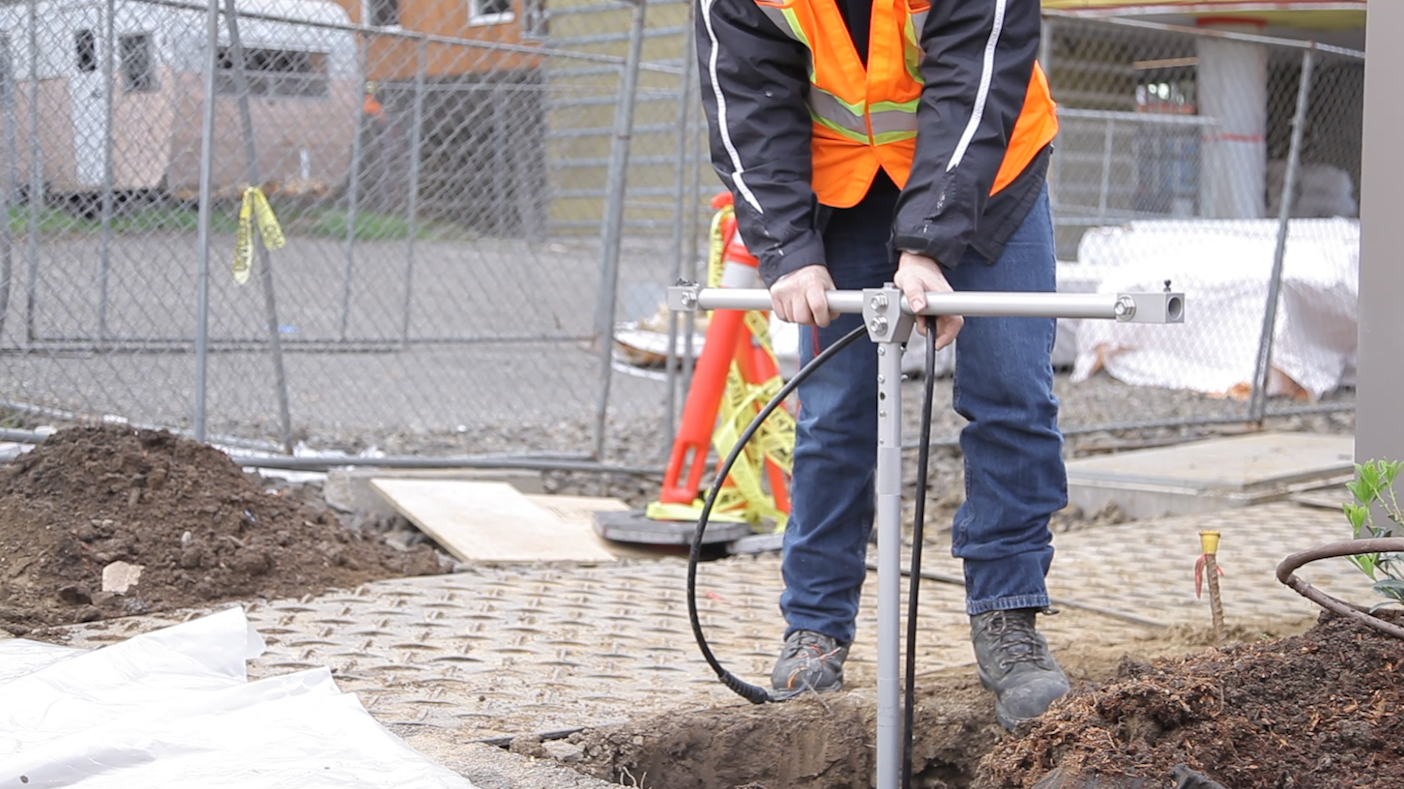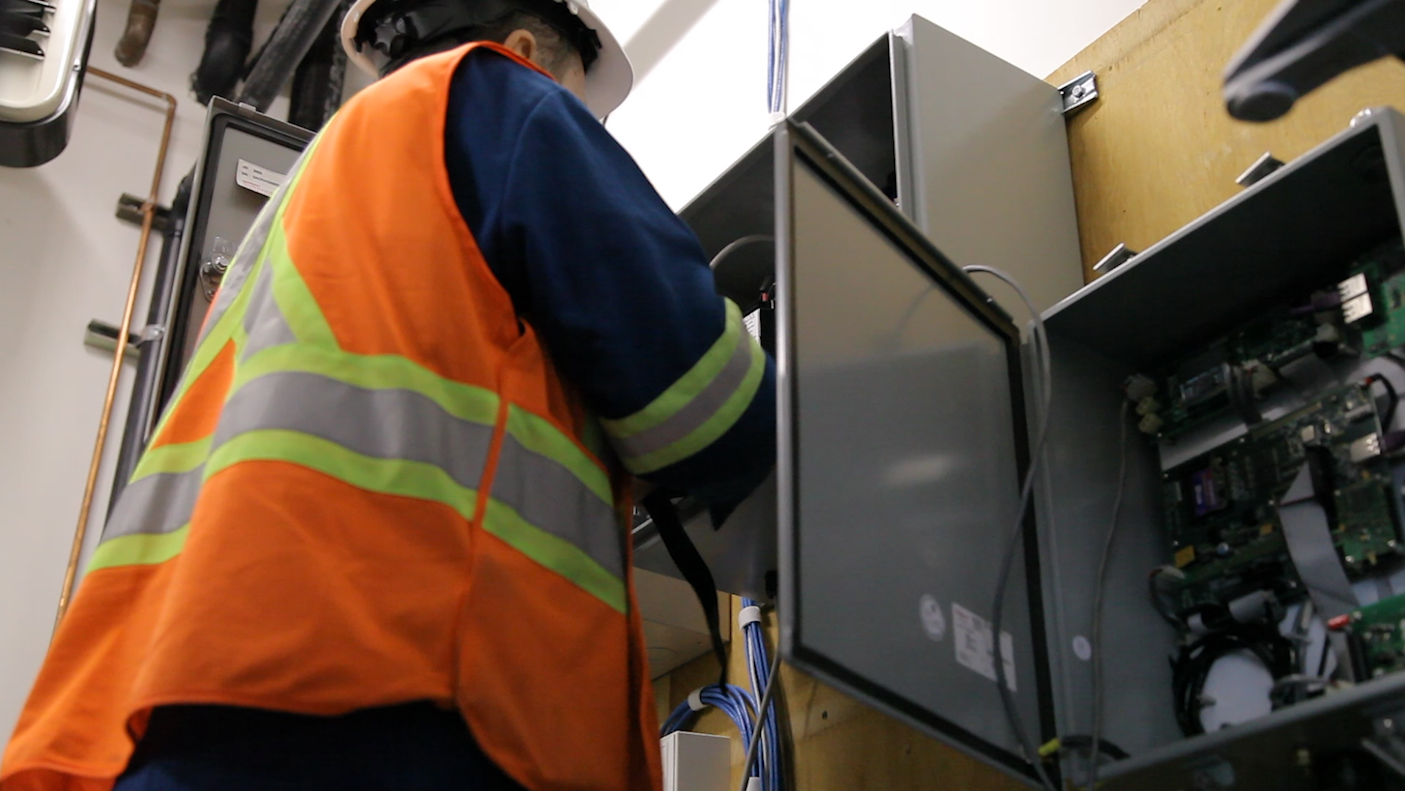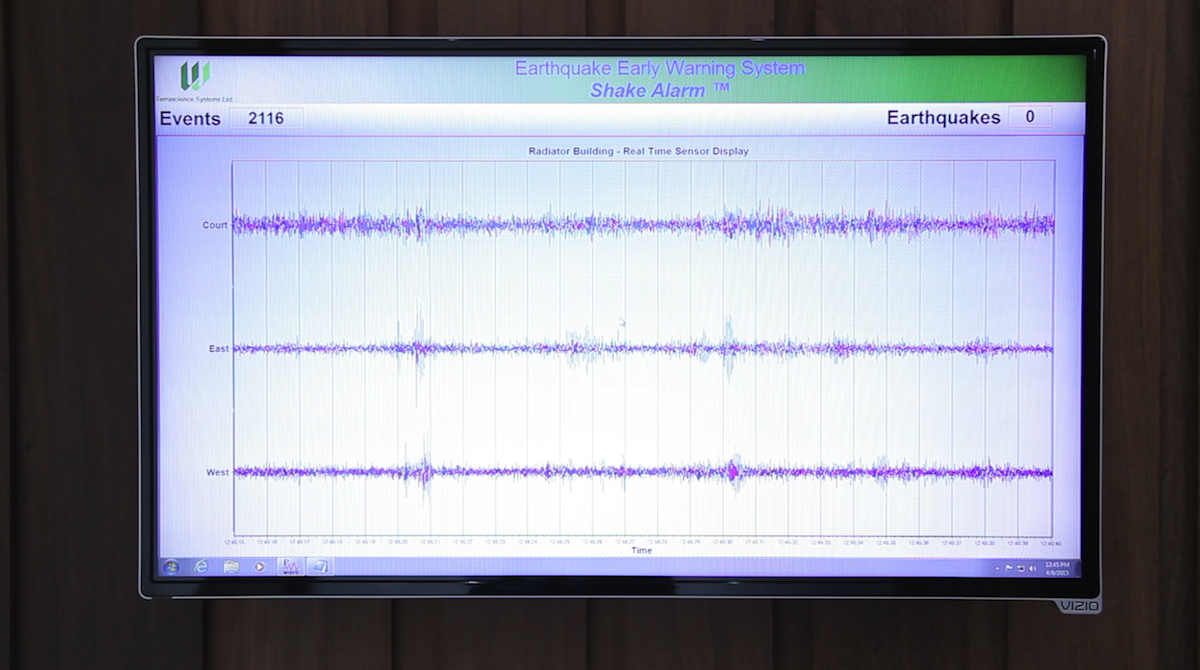CoreFirst LLC, a producer of seismic retrofit systems for commercial and institutional buildings, has partnered with Vancouver, B.C.-based Weir-Jones Engineering Consultants to commercialize Weir-Jones’ ShakeAlarm earthquake early warning system (EEWS) in the U.S.
The first U.S. installation of ShakeAlarm was recently completed at the Radiator Building, a 36,000-sf, five-story, wood-framed office building located in a densely populated neighborhood in North Portland, Ore.
 The ShakeAlarm system can recognize and quantify the faster but lower-energy seismic P-wave.
The ShakeAlarm system can recognize and quantify the faster but lower-energy seismic P-wave.
“It’s no secret that the Pacific Northwest is due for a large-scale seismic event,” said CoreFirst Principal Paul Conway. “What we haven’t had in place, until now, is an affordable system for building occupants that can provide critical advance warning and direct them to safety to minimize loss of life.”
The ShakeAlarm system recognizes and quantifies the faster but lower-energy seismic P-wave, which is the precursor to the more damaging S-wave. When used in conjunction with industrial or civil infrastructure control systems, these crucial seconds of warning can be leveraged to minimize runaway failure modes in critical structures, and shut down gas and electricity feeds to infrastructure, thereby minimizing fire risk to assets after a seismic event.
After detecting a P-wave, the ShakeAlarm system will:
• Immediately send a warning text message to the cell phone of every radiator occupant (regardless of whether he or she is in the building)
• Automatically shut down gas and electricity
• Automatically return elevators to ground level
• Open any metered doors
• Activate backup power systems
 The ShakeAlarm system initiates a number of safety measures once P-waves have been detected.
The ShakeAlarm system initiates a number of safety measures once P-waves have been detected.
Related Stories
| Aug 11, 2010
Theater Renovation—A First-Class Production
In 1985, the city of San Diego ordered the historic Balboa Theatre, its beleaguered performing arts center, to be shuttered due to seismic safety concerns. It would take another two decades to restore the landmark building.
| Aug 11, 2010
American Concrete Institute forms technical committee on BIM for concrete structures
The American Concrete Institute (ACI) announces the formation of a new technical committee on Building Information Modeling (BIM) of Concrete Structures.
| Aug 11, 2010
World-Class Revival on Utah’s Capitol Hill
Since 1916, the Utah State Capitol building has served as the foundation of Utah’s government, housing the state legislature operations as well as the offices of the governor, attorney general, and treasurer. But after decades of wear and tear and numerous short-sighted modernization attempts, Utah’s rock was on the verge of crumbling.
| Aug 11, 2010
Earthquake engineering keeps airport grounded
Istanbul, Turkey's new 2.15 million-sf Sabiha Gökçen International Airport opened on October 31, 2009, becoming the world's largest seismically isolated building. Arup's global airport planning and engineering team, in collaboration with architects Dogan Tekeli Sami Sisa Mimarlik Ofisi and contractor LIMAK-GMR JV, working within an 18-month timeline, designed and built the facility wi...
| Aug 11, 2010
Pioneer Courthouse: Shaking up the court
In the days when three-quarters of America was a wild, lawless no-man's land, Pioneer Courthouse in Portland, Ore., stood out as a symbol of justice and national unity. The oldest surviving federal structure in the Pacific Northwest and the second-oldest courthouse west of the Mississippi, Pioneer Courthouse was designed in 1875 by Alfred Mullett, the Supervising Architect of the Treasury.
| Aug 11, 2010
AIA Course: Historic Masonry — Restoration and Renovation
Historic restoration and preservation efforts are accelerating throughout the U.S., thanks in part to available tax credits, awards programs, and green building trends. While these projects entail many different building components and systems, façade restoration—as the public face of these older structures—is a key focus. Earn 1.0 AIA learning unit by taking this free course from Building Design+Construction.







